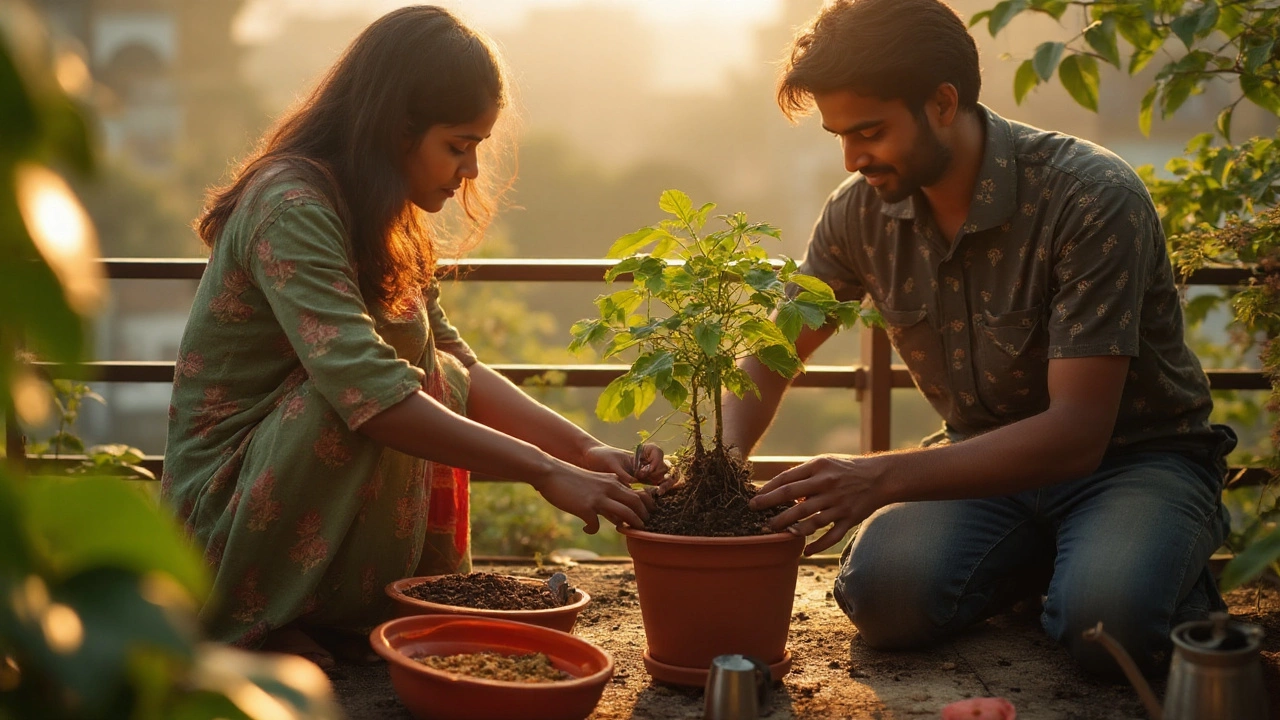The clear rules of thumb for container gardening: pot size, soil mix, watering, light, and feeding. Quick cheats, examples, and fixes for common mistakes.
Watering Schedule: How to Water Plants Right in Indian Gardens
When it comes to watering schedule, a planned routine for giving water to plants based on their needs, season, and soil type. Also known as plant watering routine, it’s not about dumping water every day—it’s about understanding when your plants actually need it. Most gardeners in India water too often because they’re afraid of letting plants dry out. But overwatering kills more plants than drought. The right watering schedule means letting the soil breathe, checking moisture levels, and matching water to the weather—not the calendar.
A good watering schedule, a planned routine for giving water to plants based on their needs, season, and soil type. Also known as plant watering routine, it’s not about dumping water every day—it’s about understanding when your plants actually need it. depends on three things: the plant, the soil, and the season. In India, summer heat dries out pots fast, but monsoon rains can drown roots if drainage is poor. That’s why a balcony tomato plant might need water every other day in April, but only once a week in July. drip irrigation, a system that delivers water slowly and directly to plant roots through tubes and emitters. Also known as low-flow irrigation, it’s one of the most efficient ways to stick to a watering schedule—especially for terrace gardens. But even drip systems fail if emitters clog or the timer isn’t adjusted for rain. soil moisture, the amount of water held in the soil around plant roots. Also known as root zone wetness, it’s the real signal your plants give you—not wilting leaves, but how the soil feels under your finger. Stick your finger two inches down. If it’s dry, water. If it’s damp, wait.
Many people think watering is a chore. It’s not. It’s a conversation. A watering schedule turns guesswork into observation. You learn which plants droop first when thirsty, which ones stay green even in dry soil, and which pots bake in afternoon sun and need extra attention. In Indian homes, balcony gardens with small containers dry out faster than ground beds. That’s why hydrangeas on a south-facing balcony need more frequent checks than jasmine in the yard. A watering schedule isn’t one-size-fits-all. It’s personal. It’s local. It’s tied to your climate, your soil, your plants. And once you get it right, you’ll notice healthier growth, fewer pests, and less wasted water.
Below, you’ll find real-world guides from Indian gardeners who’ve cracked the code on watering—whether they’re growing zinnias in pots, fixing clogged drip lines, saving overwatered houseplants, or choosing the best soil to hold just enough moisture. No fluff. No theory. Just what works on balconies, terraces, and backyard plots across India.
